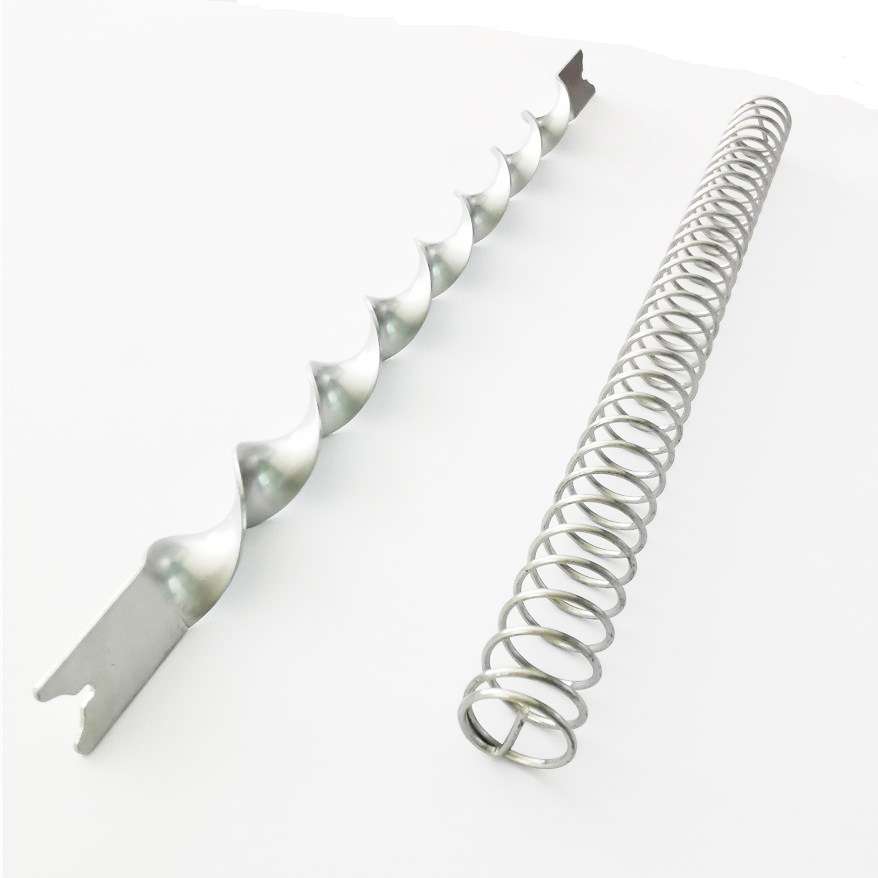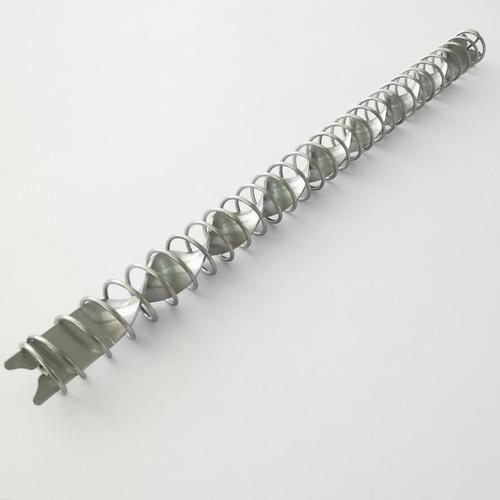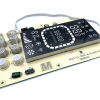
Flat Compression Springs: Mechanics & Applications
Springs are fundamental components in engineering, serving as energy storage devices capable of absorbing and releasing mechanical energy. They find applications in virtually every industry, from automotive and aerospace to medical and manufacturing.
Flat compression springs, a lesser-known member of the spring family, are characterized by their flat, coiled design. They exhibit distinct properties that make them ideal for specific applications. Let's explore the mechanics of these springs in more detail.
The Mechanics of Flat Compression Springs
Key Components and Design
Flat compression springs are typically crafted from materials such as stainless steel, carbon steel, or non-ferrous alloys. The choice of material is crucial, as it impacts the spring's durability, corrosion resistance, and elasticity.
Unlike traditional helical springs, flat compression springs feature a flattened coil configuration. This design provides a unique advantage in terms of space efficiency, making them suitable for applications with limited room for spring installation.
Working Principles
Flat compression springs are designed to withstand axial loads while being compressed. Their coiled structure allows them to absorb and distribute force evenly, making them reliable components for applications with varying load requirements.
The deflection of a flat compression spring, or how much it compresses under a load, is a critical factor in its performance. Engineers calculate this deflection to ensure the spring meets specific requirements without exceeding its stress limits.
Elasticity is the spring's ability to return to its original shape after being compressed. Flat compression springs excel in this aspect, providing consistent and predictable performance throughout their lifespan.
Advantages of Using Flat Compression Springs
Space Efficiency
The flat design of these springs allows for installation in tight spaces where traditional springs would be impractical. This characteristic is especially advantageous in modern, compact engineering designs.
Predictable Performance
Engineers can precisely predict the performance of flat compression springs thanks to their well-defined load-deflection characteristics. This predictability ensures consistent and reliable operation.
Longevity
Flat compression springs are known for their durability and resilience. Their ability to withstand repeated compressions without losing their elasticity makes them ideal for applications where longevity is a priority.
Diverse Industrial Applications
Automotive Industry
Flat compression springs find applications in the automotive sector, where they are used in clutch systems, seating mechanisms, and suspension components. Their space-saving design is particularly valuable in the automotive industry.
Aerospace Sector
Aerospace engineers rely on flat compression springs for various purposes, including door latches, landing gear systems, and safety mechanisms. Their high load-bearing capacity is vital in these critical applications.
Medical Equipment
In the medical field, flat compression springs are utilized in devices like surgical instruments and imaging equipment, where precision and reliability are paramount.
Choosing the Right Flat Compression Spring
Factors to Consider
Load Requirements: Selecting the appropriate flat compression spring depends on the specific load requirements of the application. Engineers must consider the amount of force the spring will need to handle.
Environmental Conditions: Flat compression springs must also be chosen with the application's environmental conditions in mind. Factors such as temperature, moisture, and corrosion potential can influence material selection.
Space Limitations: In applications where space is limited, the flat design of these springs offers a significant advantage. Engineers should assess the available space for installation and choose springs accordingly.
Customization and Manufacturability
Material Options:Manufacturers offer a range of material options for flat compression springs, each with its unique properties. Engineers can customize springs to meet specific application requirements.
Manufacturing Techniques: The manufacturing process plays a crucial role in the quality and performance of flat compression springs. It's essential to collaborate with experienced manufacturers who employ advanced techniques to ensure consistent and reliable products.
Conclusion
Flat compression springs, with their distinctive design and remarkable properties, have become indispensable components in various industries. Their space-efficient nature, predictable performance, and longevity make them a preferred choice for engineers seeking reliable solutions for challenging applications. Please feel free to contact us at nellyyip@xinzhaolang.com for further information - harness the full potential of flat compression springs in their projects!







